How Coated Bushings Compare to Solid Tungsten Carbide Bushings
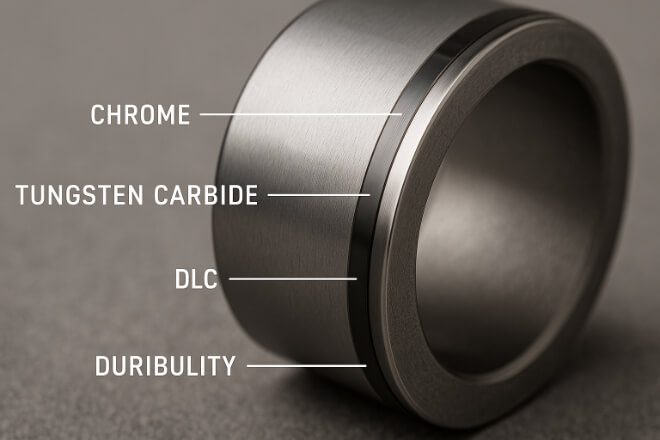
Bushings are essential parts in any system with rotating shafts — they guide, support, and reduce friction between moving components. In high-performance machinery, the type of bushing material you choose can determine the system’s reliability and lifespan. Two common types used in demanding industries are coated bushings and solid tungsten carbide bushings. Both aim to reduce wear and improve durability, but they perform very differently in practice. This article explains how coated bushings compare to solid tungsten carbide bushings in terms of hardness, wear resistance, corrosion protection, and cost-effectiveness — helping decision-makers select the best option for long-term performance. What Are Coated Bushings? Coated bushings are usually made from steel, […]
Why Choose Tungsten Carbide Over Conventional Metal Bushings?
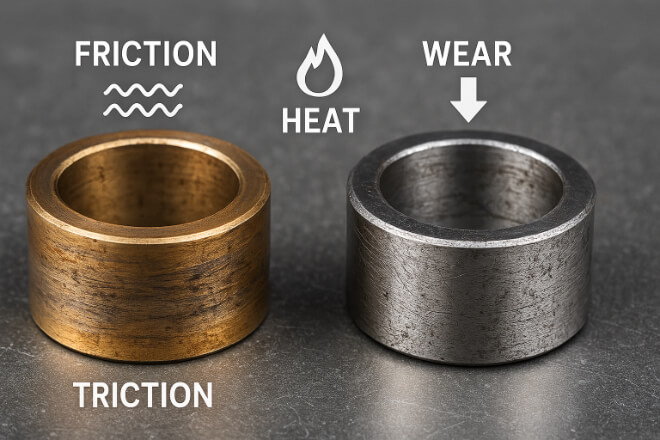
In many industrial machines — from pumps and compressors to drilling tools — bushings are critical parts that support shafts, reduce vibration, and prevent metal-to-metal contact. For decades, engineers relied on conventional metal bushings such as bronze, stainless steel, or brass. But as machines run faster and face harsher environments, these metals often wear out too quickly. This is where tungsten carbide bushings stand out. Their unmatched hardness, wear resistance, and stability make them the preferred choice for industries that demand long-term performance under extreme stress. In this article, we’ll explain why choosing tungsten carbide over traditional metal bushings can significantly improve reliability, reduce downtime, and lower long-term maintenance costs. […]
Tungsten Carbide Bushings vs Ceramic Bushings: Performance Under Stress
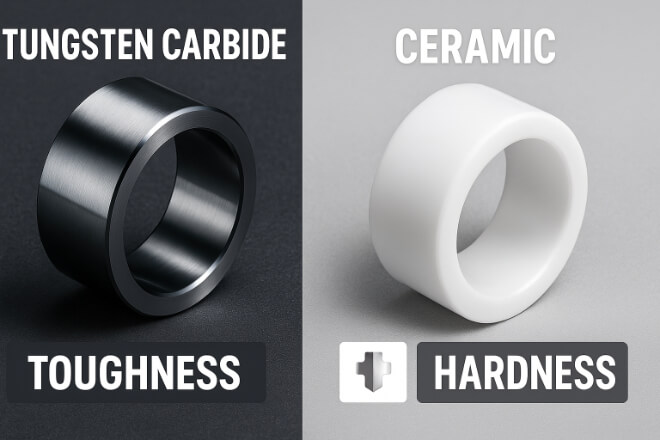
In demanding industrial systems — such as pumps, compressors, turbines, and chemical mixers — bushings play a key role in keeping shafts stable and reducing wear. When exposed to high pressure, temperature, and friction, material selection becomes critical to equipment reliability. Two materials often compared are tungsten carbide and ceramic bushings. Both are hard and corrosion-resistant, but their performance under stress differs significantly. This article explains how each performs in mechanical, thermal, and chemical conditions — helping engineers and managers decide which offers better long-term value for their operations. Understanding the Materials Tungsten carbide (WC) is a metal–ceramic composite made from tungsten and carbon particles, typically bonded with cobalt or […]
Tungsten Carbide vs Bronze Bushings: A Practical Comparison
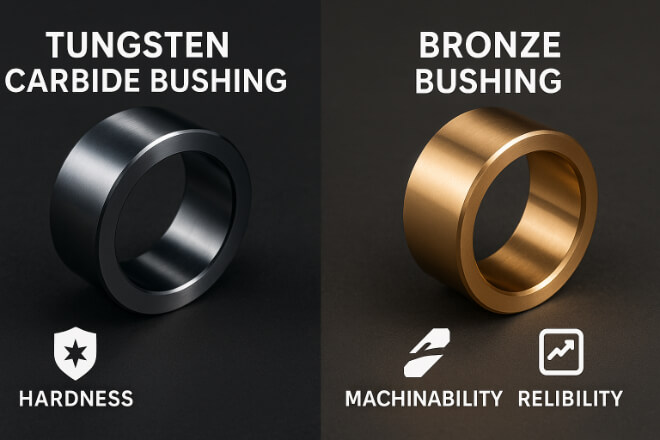
Bushings are essential in machines that involve movement — they reduce friction, guide shafts, and support rotating parts. The choice of bushing material has a big impact on reliability, performance, and maintenance cost. Two common materials used in demanding industrial systems are tungsten carbide and bronze. Both are strong and proven, but their performance characteristics differ greatly. This article compares tungsten carbide vs bronze bushings, explaining where each one performs best, how long they last, and what factors affect your final choice. Understanding Tungsten Carbide and Bronze Bushings Tungsten carbide bushings are made from tungsten and carbon powder, sintered under high temperature and pressure. The result is a very hard, […]
Tungsten Carbide vs Stainless Steel Bushings: Which Lasts Longer?
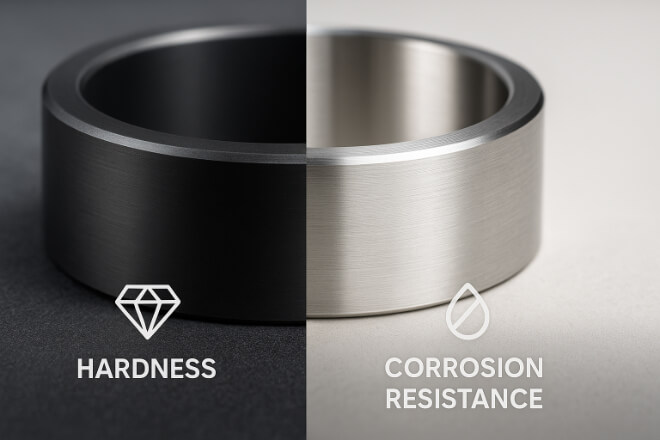
When it comes to rotating equipment, pumps, and mechanical assemblies, bushings are the unsung heroes. They ensure smooth shaft movement, reduce vibration, and protect equipment from wear. But not all bushings perform equally under demanding conditions. Two of the most common materials are tungsten carbide and stainless steel. Both are durable, but their performance in wear, corrosion, and heat resistance differs greatly. So, which one really lasts longer? This article compares tungsten carbide bushings vs stainless steel bushings, helping engineers choose the right solution for longer service life and better reliability. Understanding the Basics Before comparing, it’s important to understand what these bushings are made of and how they work. […]
